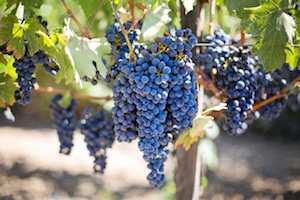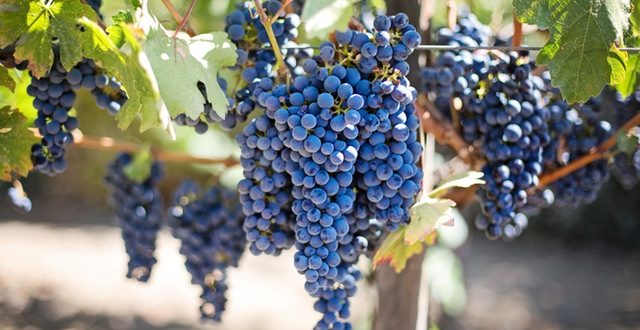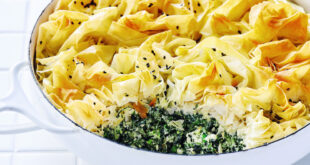 In my last wine article I talked about collecting wines, and of course if wines are being collected they have to be stored somewhere – most desirably in a wine “cellar”.
In my last wine article I talked about collecting wines, and of course if wines are being collected they have to be stored somewhere – most desirably in a wine “cellar”.
However, there is much more to creating and managing a cellar than just buying wine and storing it – without some structure and method wines will be undrinkable by the time you get to them or they will be drunk too early. Or you will end up giving wine away. The approach I have settled on is set out below.
Cellar structure
Most cellars are constructed with the bottles stored on their sides and most wine racks are made that way. However with the advent of screw caps there is no reason not to store wine standing up – but I think lying down is more convenient.
I try to store bottles in the cellar in groups representing first the type of wine, eg all Syrah’s, and then all vintages of the same wine, and all the shelves are labelled so the wines can be easily located. But keeping the labelling up to date is a bit of a mission!
If you are into structured systems another option is to label each slot in the cellar structure (eg 56 might be 5 columns along from the end and 6 rows down from the top) and then take a note of the location of each wine. This makes them very easy to find and maximises use of cellar space. My own preference is to keep the wines in groups, but I guess it would not be too difficult to do it both ways.
Cellaring temperature
The ideal temperature for a cellar is in the range of about 12 to 16 degree Centigrade but you really need temperature control though wine fridges or an air conditioned room to achieve that all the time. In practice anything up to about 20 degrees is OK – the wine will just age a bit more quickly. The killer temperature is 25. Above that you will start to get some spoilage.
In my case I use a room in the middle of the house which is well insulated from the outside. Being Wellington that works well most of the time. However, occasionally you actually get a good summer like the one we have just had and things get very dicey. I had to resort to opening up the cellar at night and closing the door during the day – and even then I hovered close to or just above the 25 degree mark for much of the time.
The wines that suffered were the pinot noirs. The 2010s are OK but I have encountered several 2009s which were still drinkable but definitely over the hill.
Cellar life stages
Cellars go through 3 life stages – setting up, on-going management and wind down. Each stage needs a different approach. Let’s look at set up and wind down first.
• Setting up by just buying wine until the cellar is full is a recipe for chaos. You need to decide on your collection approach and how that matches with the space available. The motto is “be patient” – buy the wines you really want long term and let the spaces fill naturally over time. To avoid temptation and to let the collection build invest in some everyday drinking wine (quaffing wine) as well.
• I guess some cellars go on for ever, passed from generation to generation but I think most cellars eventually get to the stage of winding down – the triggers could be a shift to a new location, loss of interest, lack of money or the demise of the collector. I expect that most wind downs are relatively unexpected, unplanned and fairly chaotic. It is not unusual for whole collections to go to auction or end up on Trade Me. I am at an age when I can see wind down in sight but timing is quite unpredictable – so the idea is to have a strategy. My strategy is to identify top wines that I am setting out to enjoy while I can, even if the cellaring is less than ideal. (This strategy has yet to be put into action but it is definitely mapped out.)
On-going cellar management
However, on-going management is the real challenge. After a lot of trial and error this is how I go about it:
• I maintain an inventory on my computer which is periodically updated off a working hard copy. The inventory is set out by wine type, (Syrah, Riesling etc) and the information comprises:
o Winery (brand)
o Quality mark (reserve, single vineyard, special label etc)
o Vintage year
o Number of bottles
o Price
o Rating by Bob Campbell (more on this below)
o Cellaring recommendation, if available
• The hard copy of the inventory is marked with the wines that I think are ready to be drunk.
• As far as possible I choose bottles to drink which keeps the “drinkers” in reasonable balance with the remainder of the wines in the cellar, taking account of what happens when we are entertaining family or friends.
Why the rating by Bob Campbell? I think it helps to know what a reputable wine critic thinks and I like Bob Campbell because he is genuinely independent, his comments are a bit quirky and his scoring aligns pretty much with my own tastes. However, he does have his favourites which he (probably sub-consciously) scores higher than might otherwise be the case.
Tasting and assessing wines
There is plenty of information elsewhere on what to look for in a wine so I will not repeat it here but I am very happy to provide comments if asked. Wine critics use a scale that goes up to 100 and the really good wines score 95 or better.
An interesting issue with wine tasting is whether to taste blind or not. Cuisine for example make a point of doing blind tastings only. I am not sure about that!! I actually think it helps to know about the antecedents of a wine in assessing it. Sometimes this can help explain something which seems to be missing and certainly helps in making a long-term assessment – wines sure do change over time! On the other hand it can lead to giving a wine the “benefit of the doubt” when it is not deserved.
And timing is also crucial. It is not uncommon for a high quality wine in particular to score relatively poorly when first drunk but progress with age – a progression from say the high 80s to at least the mid-90s is quite possible. That is one of the things that makes cellaring interesting and fun.
That leads naturally to the subject of aeration. Most wines – especially reds – need aeration to be at their best. Aged wines tend to aerate naturally particularly if corked so be careful about aerating wines with a lot of age. New wines however, particularly wines like Cabernet and Syrah, definitely need to be aerated. Even with cellared wines I have also often had the experience of drinking a wine over the space or 2 or 3 nights and finding a distinct improvement over that time.
The most startling recent example was a Clearview Reserve Chardonnay 2010. When first opened this was horrible – I almost sinked it. But there was enough there to hold me back. It then steadily improved over the next 3 days so that by day 3 it was quite magnificent – the flavours had emerged fully and odd background tastes had gone.
Notable wines I have drunk
I have had some great drops in my time but will mostly keep them to myself as they are almost entirely cellared wines and no longer obtainable in wine stores.
However, I should mention the best wine I have tasted to date– scored a perfect 100 in my book and is the only example of that in my limited history. The wine was Clearview Basketpress Cabernet Sauvignon 2007. It was outstanding in every respect. Unfortunately I only had one bottle. No doubt Clearview have samples in their library but most unlikely to be available for purchase.
I am sure I have even better wines than this in the cellar but their time has yet to come!!!!!
Start a discussion on this topic…
This is another of Bas Walker’s posts on GrownUps. Please look out for his articles, containing his Beachside Ponderings.










Join the Discussion
Type out your comment here:
You must be logged in to post a comment.